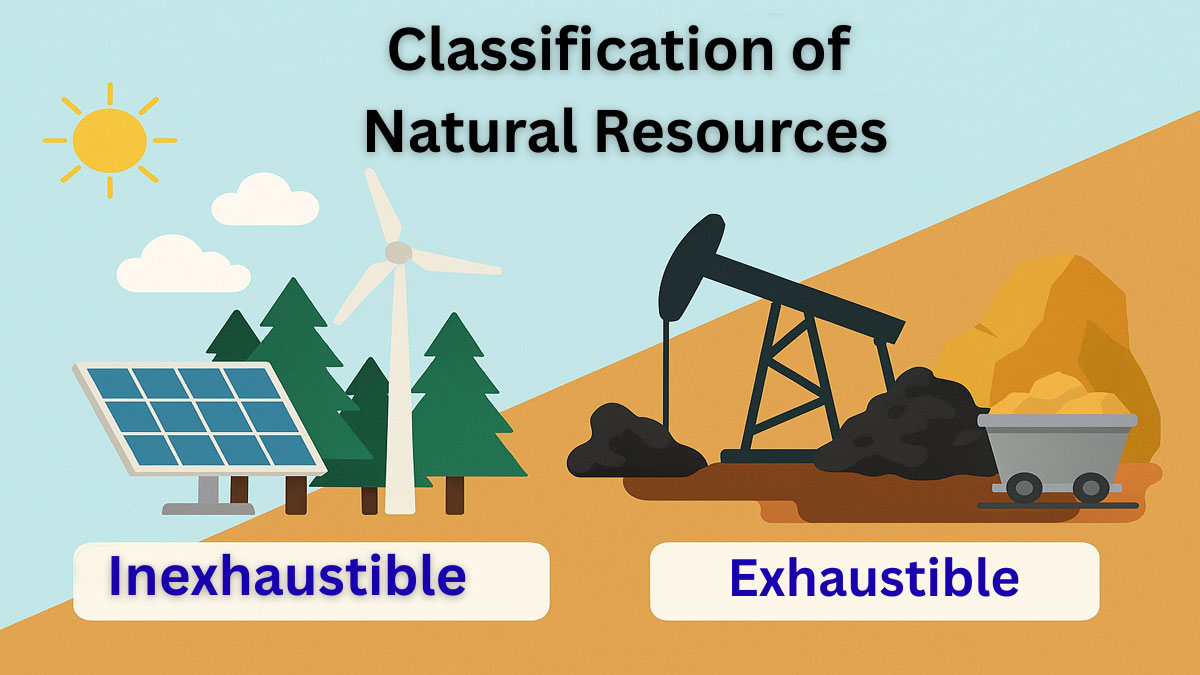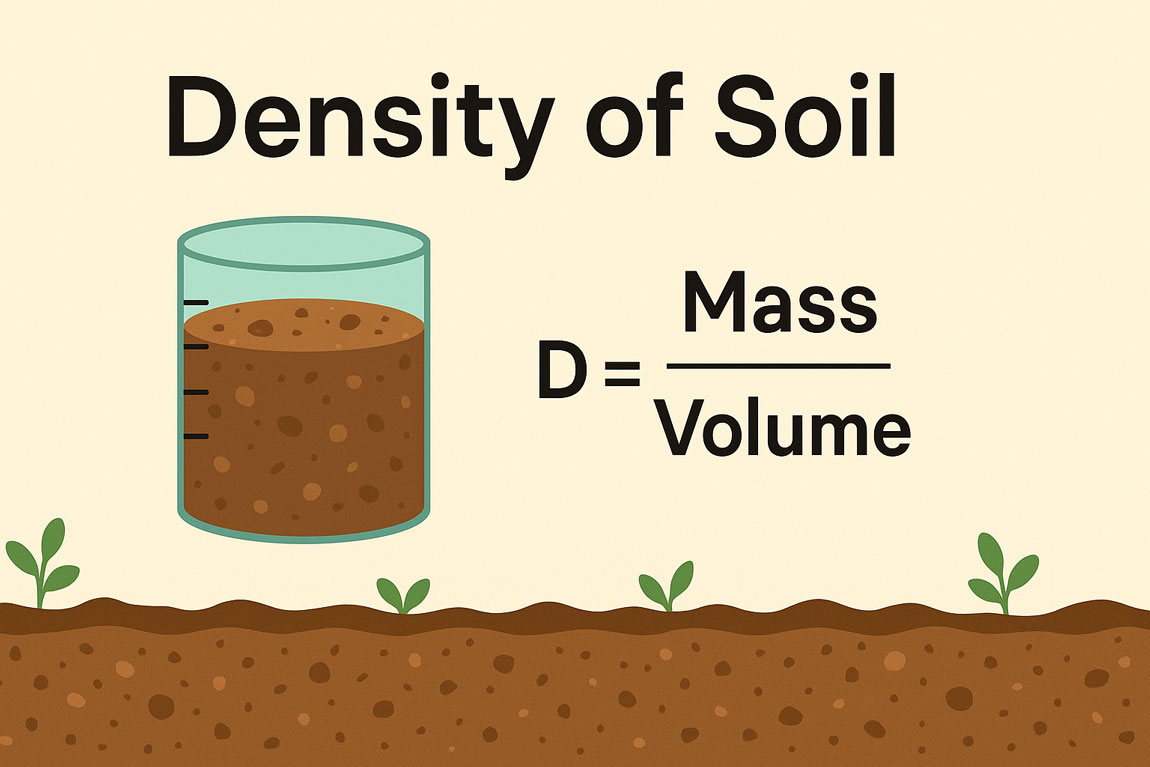Mountain building refers to the geological process that forms mountain ranges. It is caused by plate movements such as continental collisions, volcanism, and the folding and warping of the Earth’s crust. Over millions of years, these forces shape landforms and rise to towering mountains. Mountain building is essential to the Earth’s dynamic nature, affecting climate, ecosystems, and geological development.
Deformation and the Origin of Mountains
- A mountain is a landform that rises at least 300 meters above the adjacent terrain and features a limited summit area.
- A mountain range consists of interconnected peaks and ridges formed as a unified structure.
- A mountain system is a complex group of linear peaks and ridges composed of several mountain ranges.
- Mountain systems result from plate movements and interactions along plate boundaries.
Mountain Belts :
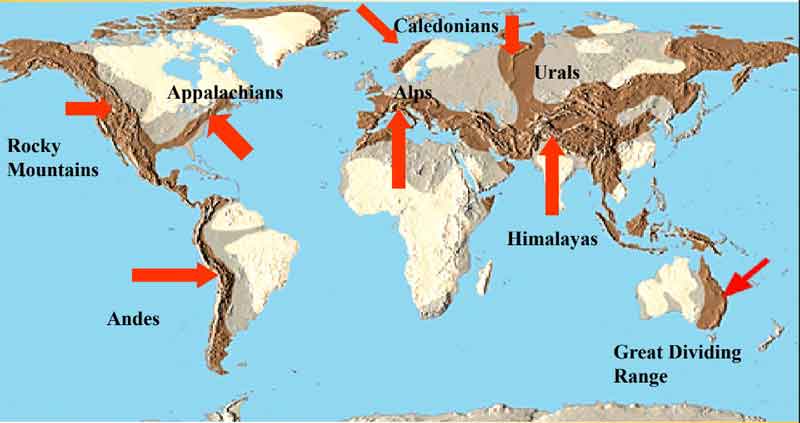
- Orogenesis describes the processes involved in the formation of mountain ranges
- folding and thrust faulting
- metamorphism and igneous activity
- Recent mountain building
- Alpine-Himalayan chain
- American Cordillera
- Island Arcs in the western Pacific
- Older mountain building
- Appalachians, eastern US
- Urals, Russia
Where do Mountains Form?
- A mountain is a large rock mass rising far above its base.
- Are formed due to tectonic activity – due to convergence of plate boundaries
- Most of the world’s mountains are formed in long belts due to the whole side of plates crashing into other plates
- A mountain belt is a region where mountains are forming or have formed in the past
TYPES OF MOUNTAINS:
Mountains can be classified in various ways depending on the criteria applied. Some of the most common types are:
- Fault-block Mountain
- Folded Mountain
- Volcanic Mountain
- Dome mountain
Fault-Block Mountain:
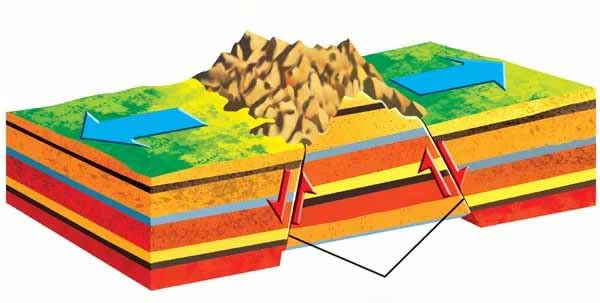
Fault mountains form when rocks shift along fault lines, resulting in steep, rugged cliffs and relatively flat, elevated areas. Fractured rock mountains are formed by tectonic movements and faults. Mountains shape the Earth’s surface and are found all over the world.
Formation of Fault-block Mountain:
Fault-block Mountain is primarily formed by two main processes:
- Faulting
- Uplift.
Characteristics of Fault-block Mountain:
- Steep Escarpments: Block mountains are characterized by their steep and rugged cliffs that line their peripheries. These escarpments result from the vertical displacement of rock blocks, which occurs along fault lines.
- Horsts and Grabens: Block mountains consist of higher areas called horsts and lower areas called grabens. The horsts are the raised blocks, while the trenches are the sunken blocks between them.
- Faults and Fissures: Block mountains are defined by the presence of faults and fissures, which delineate the boundaries between separate rock blocks. These fractures occur due to the movement and displacement of the rocks.
- Varied Topography: Block mountains feature diverse topography, with uplifted blocks displaying flat or gently sloping surfaces, while steep slopes or cliffs often form along fault lines.
- Varied Geological Structures: Block mountains can consist of different rock types, including sedimentary, igneous, or metamorphic, depending on the region’s geological history.
Folded Mountain:

Fold mountains are large landforms created by the process of folding. This occurs when rocks are subjected to compression forces. These mountains are usually elongated and have a series of parallel folds. Fold mountains are located across various regions of the world.
Formation of Fold Mountains:
The formation of fold mountains involves:
- The interaction of tectonic plates and
- The process of plate convergence.
When two continental plates come together, neither plate is dense enough to sink below the other. Instead, the plates fold and buckle, leading to the formation of mountainous structures as the rocks crumple and fold.
Characteristics of Fold Mountains:
- Parallel folds: Folded mountains are characterized by parallel folds that extend over long distances. These folds form undulating ridges and valleys that give the mountains their characteristic appearance.
- Folded and uplifted rock layers: Folded mountains form when rock layers are deformed and folded. Layers of sedimentary, metamorphic, or igneous rock are bent, twisted, and uplifted. This exposes different types of rock and creates different geological features.
- Diverse topography: Fold mountains can have diverse topography due to complex folding and erosion. These include steep slopes, deep valleys, rugged mountains, plateaus, etc. They provide a wide range of habitats for diverse plant and animal species.
- Volcanic Activity: Fold mountains are formed primarily by folding and compression but can also be associated with volcanism. Strong compression can cause magma to rise to the surface, leading to the formation of volcanic craters and eruptions.
- Human Habitation: These mountains have attracted human settlements in the past due to their varied topography and access to resources. These areas can support human activities related to agriculture, livestock farming, and mountain tourism.
Volcanic Mountain:
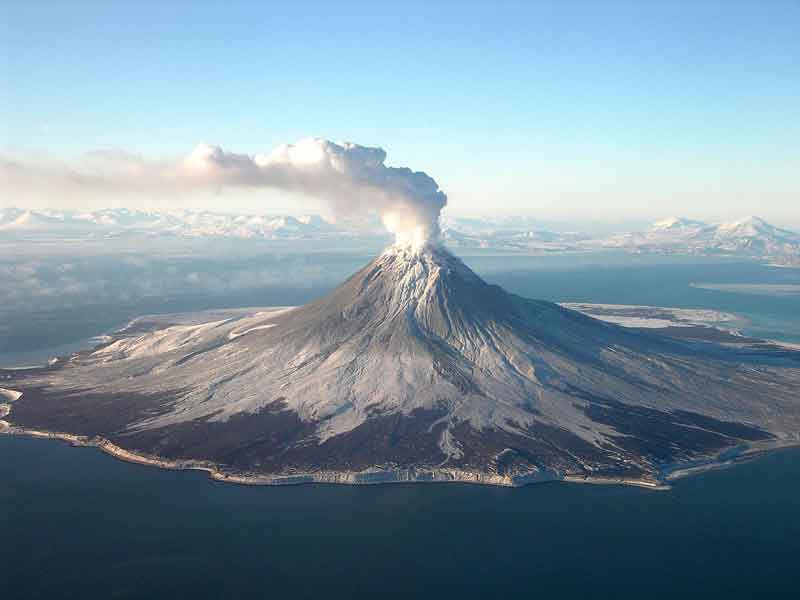
Volcanic mountains, commonly referred to as stratovolcanoes or composite volcanoes, are impressive geological structures created by volcanic processes.
Formation of Volcanic Mountains:
Volcanic mountains are formed through the movement of tectonic plates and volcanic eruptions. The Earth’s outer layer consists of tectonic plates, which float on the mantle and interact at their boundaries. When two tectonic plates collide, one plate can be forced beneath the other in a process known as subduction. As the subducting plate sinks into the Earth’s mantle, it begins to melt due to the intense heat and pressure. This molten rock, known as magma, is less dense than the surrounding rocks and thus rises towards the surface. Magma can break through the Earth’s crust and reach the surface, transforming into lava during an eruption.
Characteristics of Volcanic Mountains :
Volcanic mountains stand out for their unique features, setting them apart from other mountain types. They encompass the following distinguishing characteristics:
Conical Shape: Volcanic mountains are usually cone-shaped, sloping steeply towards the summit. This shape results from accumulating successive layers of lava, ash, and other volcanic material from eruptions.
Composite structure: Volcanic mountains are often called composite volcanoes. They are made up of alternating layers. The layers include lava flows, volcanic ash, and other pyroclastic materials. These layers accumulate over time and form a layered structure.
Crater or caldera: Volcanoes often have a depression at the top called a crater or caldera. This occurs when a crater collapses, or an eruption forms a large cavern. Craters can vary in size and shape depending on the intensity of previous volcanic activity.
Volcanic activity: Volcanic mountains are associated with volcanic activity. This includes:
- Eruptions
- Gas emissions
- Volcanic hazards such as pyroclastic flows, lahars, and ashfall.
Dome mountain:

Dome mountains are distinguished by their rounded, dome-shaped profiles. These geological formations can range significantly in size, from modest hills to extensive mountain ranges. As time progresses, the outer layers of these domes undergo erosion, revealing the solid igneous or metamorphic rock that constitutes their core.
Formation of Dome Mountain:
When magma rises beneath the Earth’s surface, it creates domes by pushing against the overlying rock layers instead of breaking through.
Characteristics of Dome Mountains
Uplift: Dome mountains are formed by the uplifting movement of the Earth’s crust. This uplifting process can be caused by the movement of tectonic plates, volcanic activity, or magma intrusion from below the surface.
Plastic Deformation: The uplifted rock layers undergo plastic deformation, which causes them to bend or buckle, forming the dome shape.
Erosion and Exhumation: As the dome continues to rise, erosion processes like weathering occur. The dome is eroded by:
- Water
- Wind
- Glaciers.
The constant erosion process gradually strips away the top layers, unveiling the enduring core rocks that have been uplifted over time.
Characteristics of Dome Mountain:
Shape: Dome peaks have a symmetrical or slightly elongated rounded shape. They resemble an inverted bowl or dome.
Structure: They are usually made up of layers of rock that have risen and folded to form a dome shape.
Core: The heart of a dome mountain consists of the most ancient and most brutal rocks, which are typically highly resistant to erosion.
Erosion: Over time, erosion from wind, water, and ice can wear away the dome’s outer layer, exposing its core.
Conclusion :
The formation of mountains is a dynamic process that has significantly altered the Earth’s surface over millions of years. These impressive geological features not only provide stunning vistas but also play an essential role in shaping climate, ecosystems, and human societies. The interactions between tectonic plates, along with the gradual uplift and erosion of mountain ranges, demonstrate the continuous influence of natural forces on our planet. A comprehensive understanding of mountain formation enhances our appreciation of the complex mechanisms underlying Earth’s geology and highlights the constantly evolving nature of the environment. As scientific research progresses, we are able to gain a more profound understanding of the origins and development of mountains, thereby enriching our perspective on the forces that shape our world.




